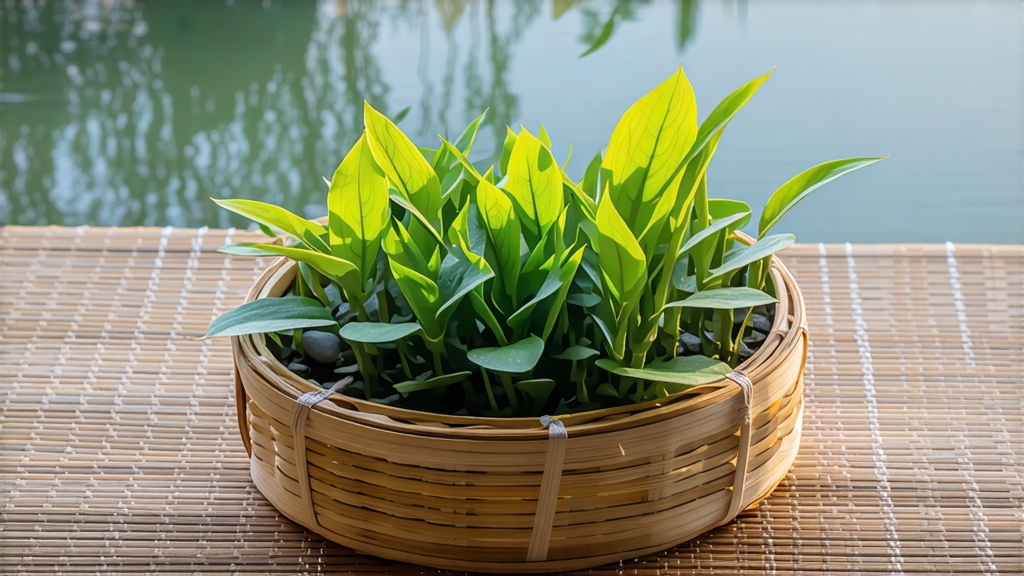
Among the vast family of Chinese green teas, none carries quite the same regal aura as Longjing, often spelled Lung Ching in older romanizations. Its very name—“Dragon-Well”—evokes mythic springs, imperial poets, and terraced hillsides brushed by morning mist. To understand Longjing is to listen to a 1,200-year conversation between soil, season, and human hand; to taste it is to sip the liquid memory of Hangzhou’s West Lake, where willows comb the breeze and stone lions guard ancient wells.
Historical roots
The first credible mention appears during the Tang dynasty, when Lu Yu’s Classic of Tea noted “a fragrant tea from the hills of Qiantang.” By the Song, Buddhist monks at Hangzhou’s temples were already pan-drying leaves in woks to preserve spring’s fleeting sweetness. True fame arrived in the Qing: the Qianlong Emperor, touring the Jiangnan region, planted eighteen bushes himself by Lion Peak (Shi Feng) and conferred imperial status on the tea. Court chroniclers record that the leaves were so tender they unfolded in the cup like “swallow tails in warm rain,” prompting the emperor to award the coveted gong cha (tribute tea) designation. From that moment forward, Longjing was no longer merely a beverage; it was dynastic soft power, a green ambassador carried along the Grand Canal to Beijing.
Micro-terroirs and grades
Longjing is not a single tea but a constellation of micro-terroirs, each whispering its own accent. The four historically celebrated plots form the characters “Shi-Long-Wu-Yun”:
- Shi Feng (Lion Peak): granite soils, diurnal swings of 10 °C, yielding a bean-sweet, almost orchid aroma.
- Longjing Village: the original well with its dense, water-retaining purple shale; cups here taste of wet stone and baby corn.
- Wengjia Mountain: slightly higher elevation, bamboo groves filtering sunlight; the leaf carries a faint bamboo-leaf greenness.
- Yunqi Bamboo Path: morning fog lingers longest; tea tastes of steamed edamame and marine breeze.
Beyond these core zones, the Hangzhou municipality recognizes “West Lake Longjing” as a protected geographical indication, while teas from neighboring counties like Xinchang or Songyang are marketed simply as “Zhejiang Longjing.” Purists compare the difference to Grand Cru versus village Burgundy: both can delight, yet the mineral dialogue of the original slopes is irreplaceable.
Cultivars and harvest calendar
The heirloom cultivar is Qunti (literally “group variety”), a seed-propagated population whose leaves are small, pale, and densely toothed. In the 1980s researchers released Longjing #43, a clonal selection that sprouts 7–10 days earlier, offers a more uniform emerald hue, and tolerates machine harvesting. While #43 delivers brighter cups and prettier leaves, traditionalists prize Qunti for its slower polyphenol build-up and lingering “sweet throat” (hui gan).
Harvest begins before Qingming festival (around April 5), when nights are still cool enough to lock amino acids in the leaf. Pre-Qingming pickings, called Mingqian, can command over 2,000 USD per 500 g because each bush offers only a few “one bud with one unfolding leaf” sets. The season closes with Yuqian (before the Grain Rain, circa April 20), when leaves grow larger and stems lengthen, trading some elegance for volume.
Craft: the art of pan-firing
Unlike Japanese greens that are steamed, Longjing is shaped and dried in a hot wok, a technique called pan-firing (sha qing). A master with 30 years’ experience works at 80 °C, pressing, shaking, and smoothing 250 g of leaves at a time. The motion vocabulary is precise: “tremble to expel moisture, press to flatten, rub to lock fragrance.” Within ten minutes the leaf loses half its weight, its edges brushing the metal with a sound like dry snow. The temperature then drops to 60 °C for the “final shaping,” when the artisan coaxes each leaf into the iconic jade plank, smooth and spear-straight with a tiny sharp tip. One kilogram of finished tea demands 60,000 hand movements—roughly the number of characters in a short Tang poem.
Modern workshops employ automated drums set to mimic the master’s rhythm, yet connoisseurs insist the